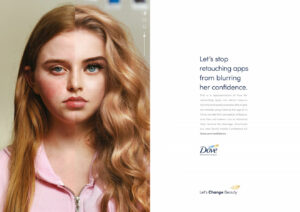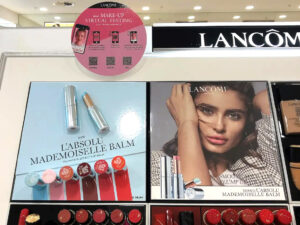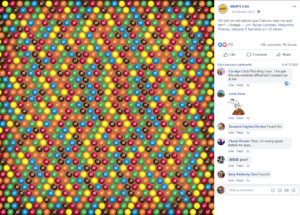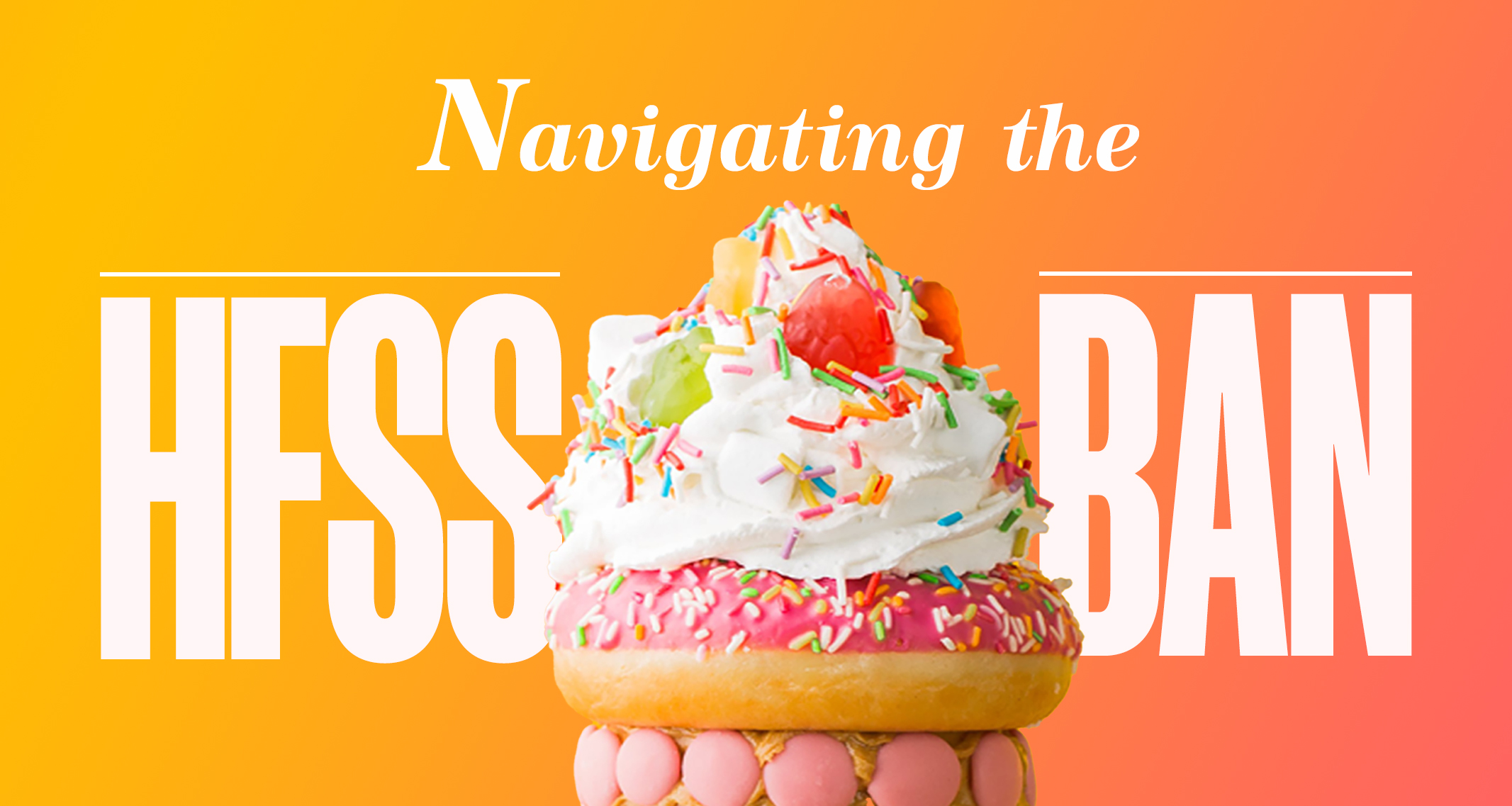3 game-changing strategies to overcome the HFSS Ban (WITHOUT CREATING A NEW PRODUCT RANGE)
Posted by: Amanda Mulquiney - 08.12.22
3 game-changing strategies to overcome the HFSS Ban (WITHOUT CREATING A NEW PRODUCT RANGE)
In October, the UK government will enforce new regulations restricting the promotion of food and drinks that are high in fat, sugar and salt (HFSS) in store, online and in TV advertising – all in an attempt to tackle the rising obesity crisis in children over recent years worsened due to inactivity during lockdown.
In this 5-minute read, we’ll discuss why the regulations are leaving a bad taste in marketers’ mouths and outline 3 ways that you can overcome the HFSS ban (without creating a new product range, refining recipes or ingredients).
At Ride Shotgun, we believe these restrictions should be seen as an opportunity to forge better relationships with your brand through creative innovation and technology.
After all, wasn’t it Orson Welles who once said, “out of limitation, comes great creativity”?
WHAT ARE THE HFSS REGULATIONS?
In less than 10 weeks, the rules will clampdown on how food and drinks brands can be marketed across all channels – in store, online and on TV.
- HFSS PRODUCTS – Hundreds if not thousands of products are included within the HFSS scope including crisps, savoury snacks, sugary soft drinks, chocolate and sweets, as well as ice cream and lollies, cakes and sweet biscuits. Pastries, processed meats and pre-prepared meals will also be affected.
- MULTI BUY PROMOTIONS – Multi-buy promotions will be phased out including “BOGOF” (buy one get one free) or “3 for 2” bulk promotions.
- HIGH IMPULSE LOCATIONS – Regulations will be laid out to no longer feature high impulse purchases in key locations such as the end-of-aisle, store entrances and checkout.
- WATERSHED – Food and drink considered high in fat, salt and sugar will be restricted from being advertised between 5:30am and 9pm. This restriction has been delayed until January 2024.
- CHANNELS – The restrictions will also apply across TV advertising and in sponsored advertising across paid search and display. Digital, audio and OOH (outdoor or out of home advertising) remain untouched. The restrictions banning HFSS adverts on TV before 9pm and paid-for adverts online will also be paused for a year, meaning they come into force January 2024.
The Grocer predicts this could hit the industry between £1BN and £3BN in sales revenue from promotions.
MARKETERS REACTIONS
In a recent article from The Drum, it seems the new proposal is like Marmite – you either love it or you hate it – although the voices that speak loudest are those that are condemning the policy…
“It’s a stupid, dumb, idiotic, pointless waste of effort and I hate this stupid government for sticking its nose in where it shouldn’t be.” – An anonymous Senior Ad Exec at a recent event from The Drum made his views clear! It seems though that many others feel the same…
Jon Mew, Chief Executive of Digital Advertising Body (IAB) UK, is “staggered that, in the face of so much evidence showing that it will have next to no impact on childhood obesity rates, the government continues to pursue headline-grabbing, hollow actions with today’s confirmation of an HFSS online advertising ban”.
One major player in the market, Kellogg’s, recently took the regulations head on and launched a high court battle stating that the regulations did not take into account the fact that milk is also served with cereal therefore adding nutritional value. Unfortunately for Kellogg’s, they didn’t win the case.
OUR TAKE: 3 WAYS TO SURVIVE THE HFSS BAN
CHAMPION HEALTHIER ALTERNATIVES
Okay, okay – I know what you’re thinking… Forgive me for contradicting the whole premise of this article but it would be remiss of us not to touch on the fact that many brands ARE indeed championing healthier alternatives by going back to the drawing board by creating new product ranges, adjusting the nutritional values of their recipes, and amending portion sizes (think “bite-size” and “snackable” packs).
…but what if making changes to your recipe would compromise your brand – or the taste that you’ve lovingly perfected over the years? What if you’re a sports bar or drinks brand and there’s little you can do to amend your ingredients?…
When this approach doesn’t quite cut it, what else can you do?
We took it to our creative team to find out:
1. MORE ENGAGING BRAND-LED MESSAGING + PACKAGING
The new regulations mean that you can still advertise HFSS products between 9pm and 5:30am as well as any brand led messaging (without promoting the specific products themselves) during the day. With this in mind, our advice would be to think about what your brand stands for, its mission, values or purpose and build engaging ad campaigns around these instead.

It’s worth considering what your target audience cares about most and develop campaigns centred around this – it could be welfare, sustainability, the craftsmanship behind your products. Dove’s done a great job facing important issues such as body confidence, mental health and self esteem without referencing the product at all.
What’s more, 72 per cent of consumers say that packaging design influences their purchasing decisions. Now that a large proportion of the store is out of bounds, you have even more reason to stand out from the crowd in the aisle. Maybe this is a chance to revisit your brand packaging to be more distinctive in your packaging design and style.
Last but not least – this is a time to consider your messaging in your wider marketing strategy to drive traffic direct to store and online…. A few weeks ago, we wrote an article on the “5 Best Creative Chocolate Ads of all Time”.
If you’re struggling for creative ways to connect with your audience – then look back at the likes of Kit Kat’s, “Have a break, have a…” and Snickers’, “You’re not you when you’re hungry” taglines. These highlight the importance of coming up with creative messaging and sticking with it. By doing this – over the years, they’ve been able to do what most brands dream of. They can comment on culture. When anyone needs a break, send them a Kit Kat. No one needs to explain the product anymore, which leads to some really interesting creative opportunities.
Get this right and consumers will head straight into the store to seek out your brand, whether it’s at the end of the aisle, or not.
2. CREATE MEMORABLE EXPERIENCES WITH INTERACTIVE MARKETING
We know what you might be thinking, Kit Kat and Snickers have been around for decades – building their brand awareness over years (with deep pockets). All the while the market is getting ever more saturated with new and emerging brands. Regulations such as the HFSS ban has made it more difficult for these challenger brands to stand out and be seen.
We feel this is a time to adopt more innovative, interactive marketing to increase in-aisle engagement:
THE HUMBLE QR CODE
The QR Code is having a revival, with brands looking to give their customer experience the edge.

L’Oreal partnered with Glamour and used QR Codes in-aisle for virtual make-up testing as well as inside taxis to capture customers on the go and stuck in traffic. The campaign promoted the range of Lancôme and Yves Saint Laurent product lines by linking QR Code campaigns to videos about how to use the products and redirecting to the “best match” advice and product pages. The campaign helped L’Oreal increase its app downloads by 80%. The same approach could be applied to HFSS brands.
CONNECTED PACKAGING, PERSONALISATION & GAMIFICATION
Consumers are more comfortable than ever to get their phones out and use QR codes, webAR and filters on the go. Brands are starting to integrate webAR, personalisation and gamification into their brand packaging for a more memorable experience.

M&M’s Eye-Spy Pretzel app is a good example of this.
A simple, fun game where users are tasked with finding the pretzel hidden within an image full of M&M’s. This relatively simple game led to 25,000 new likes and around 6,000 shares on Facebook.
To find ways to adopt these tactics in a way that’s unique to your brand, get in touch.
3. EXPLORE NEW CHANNELS
While the HFSS rule might be an issue for in store, paid online and TV – there are so many other ways to conduct effective advertising and marketing campaigns organically and across new channels. If there was ever a time to become experiential, it’s now.

Brands need to shift their focus from paid advertising to owned and earned channels by using innovative strategies suggested above. Growing your following organically and connecting with your customers in more unique and authentic ways will have a snowball effect with user generated content on social – all the while leaving you in the driving seat when it comes to your experience and your data. Eve mattresses grew brand awareness and sales in the UK with their “Refuse to Snooze” 6-episode podcast on the negative impacts of hitting snooze. There’s no reason this couldn’t be applied to HFSS brands too.
Our advise?
Everyday we help brands to deliver meaningful and creative campaigns, if there’s one thing we’ve learnt – there’s always room for creativity.
Push the boat out. Think outside the box. Break the box! Break the norms but just don’t break the rules.
If you aren’t quite prepared for the impending HFSS ban, want to find new ways to stand out in the retail aisles, or simply want to find better ways to amplify and connect with your audience, it’s not too late.
Reach out and connect with our team today.
